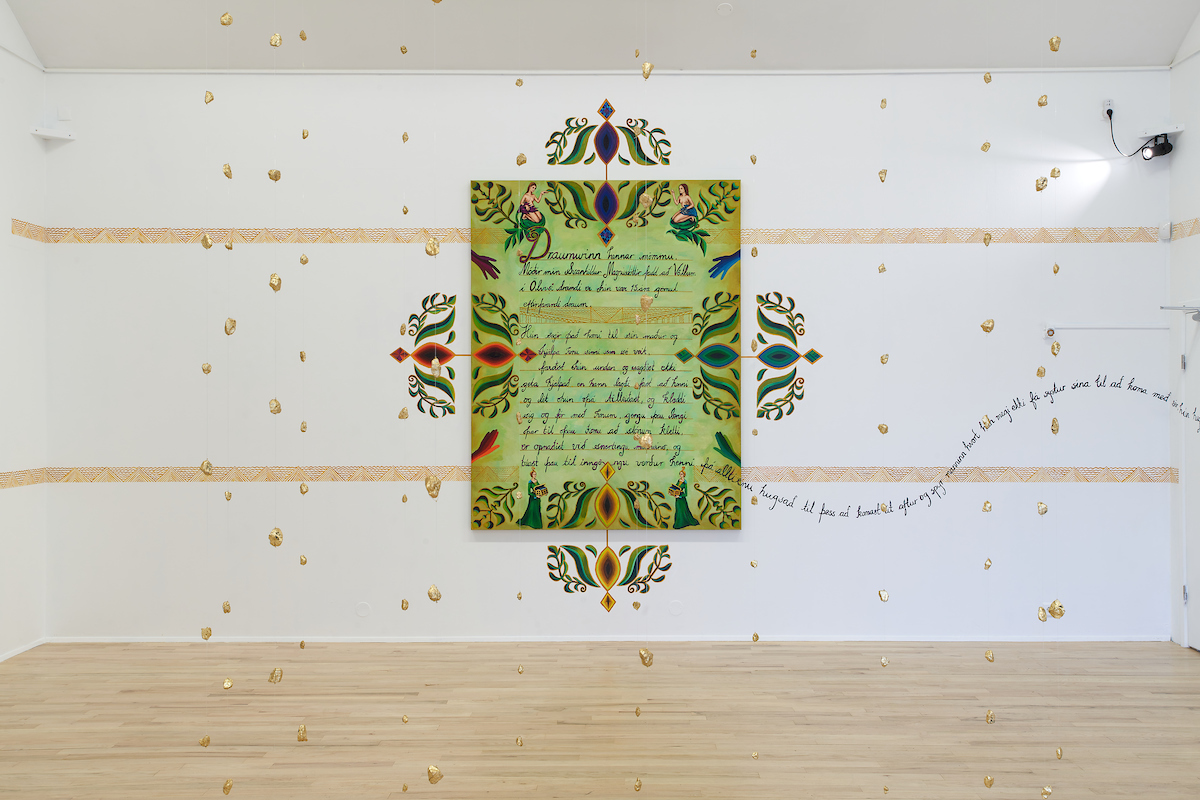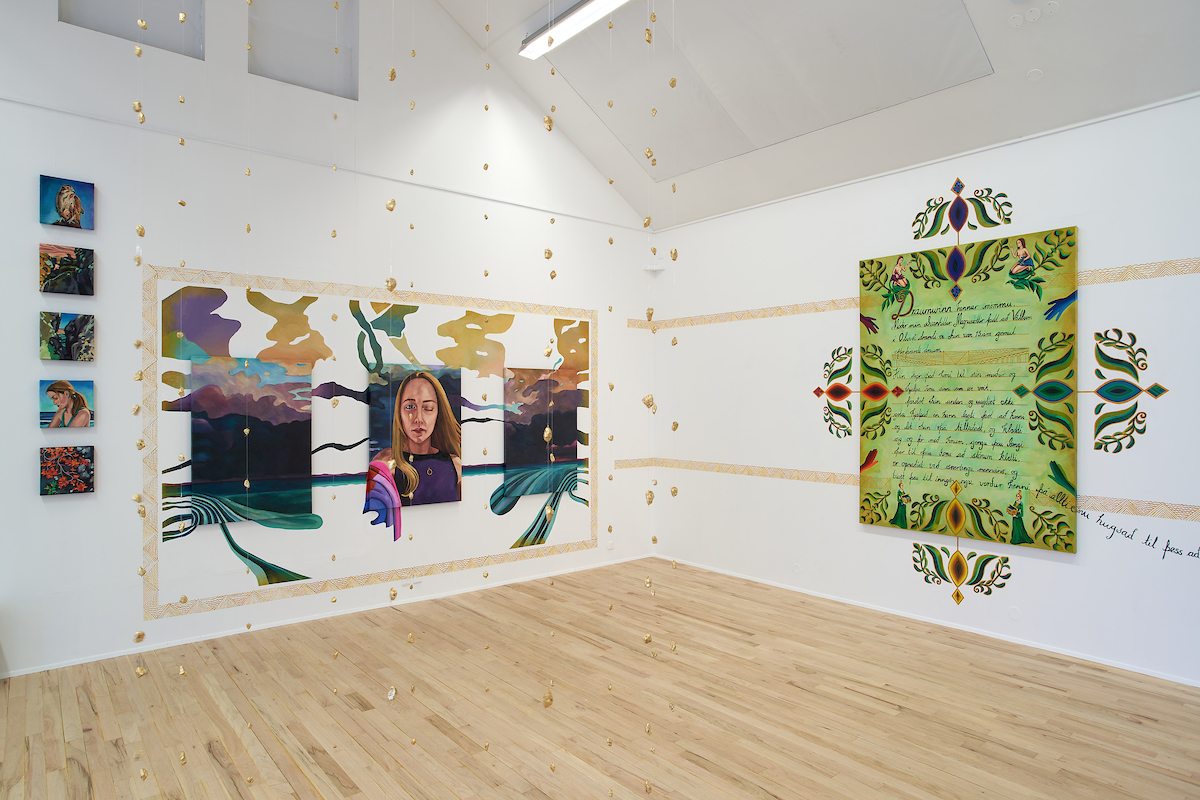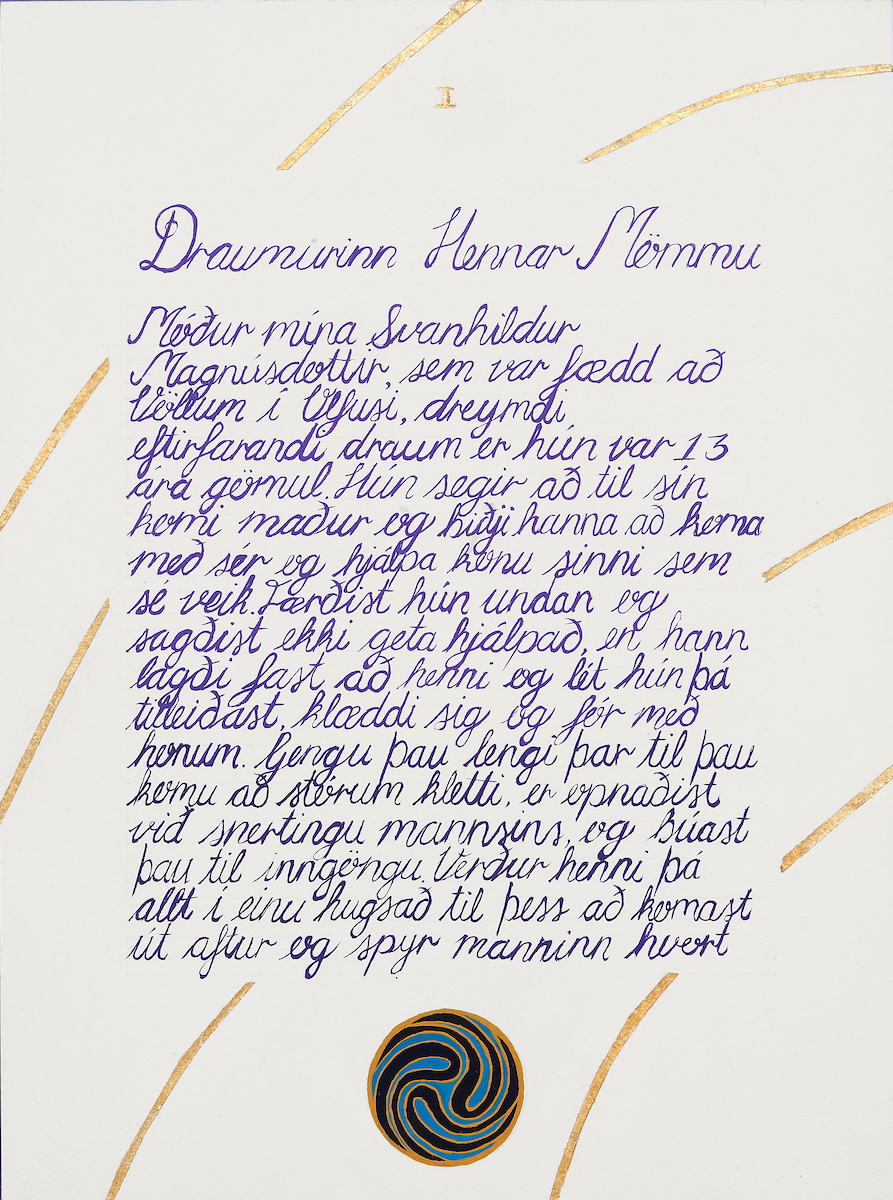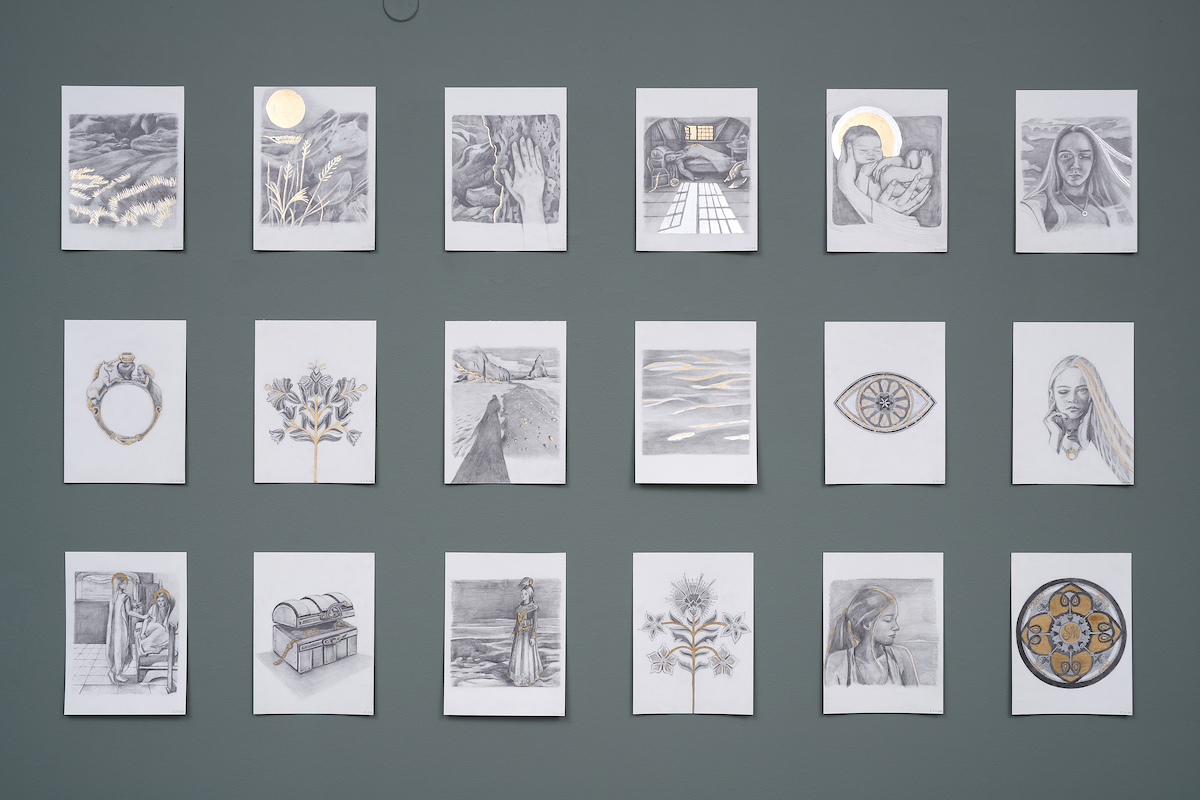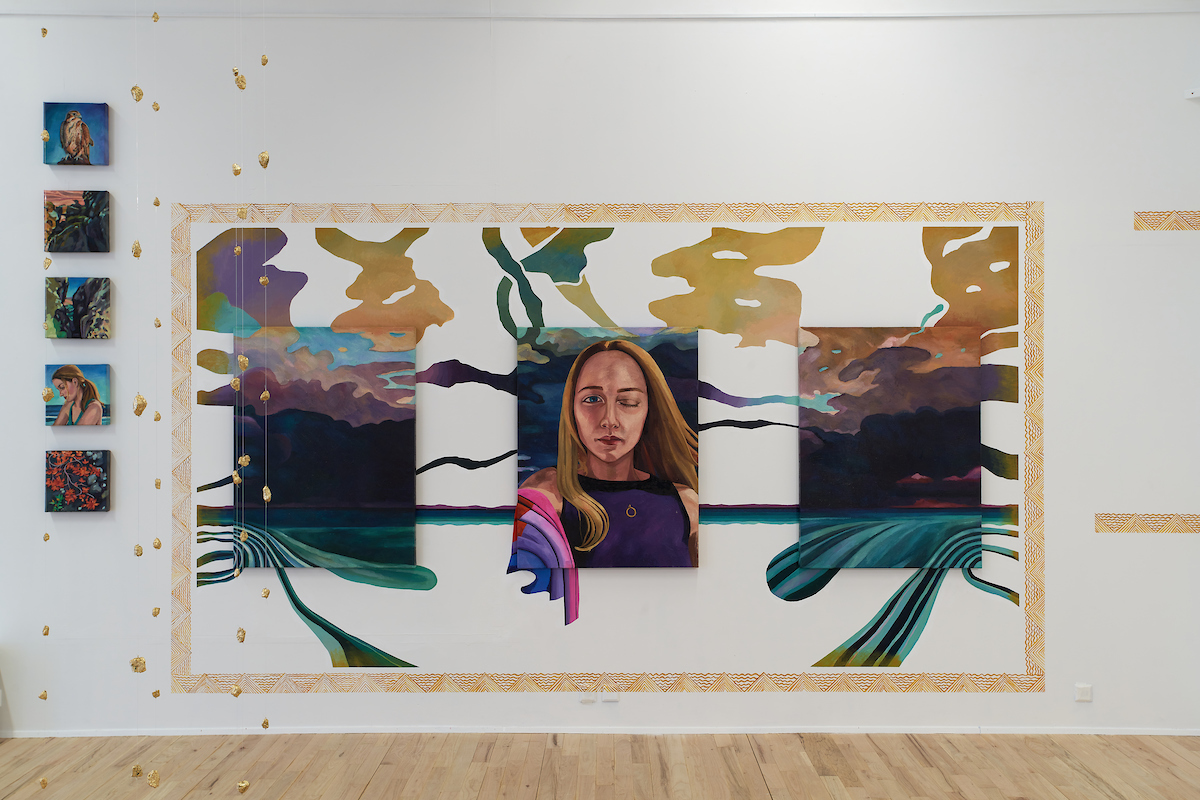
Ljósmyndir: Vigfús Birgisson
Erla S. Haraldsdóttir
My Mother´s dream
2nd of March – 25th of August 2024
Here you can visit the exhibition in 3D.
https://my.matterport.com/show/?m=3duRTyQrKJr

My Mother’s Dream: The Recent Work of Erla S. Haraldsdóttir
The unconscious text is already a weave of pure traces, differences in which meaning and force are united—a text nowhere present, consisting of archives which are always already transcriptions. Originary prints.
—Jacques Derrida, Writing and Difference (1967)
In Writing and Difference, French philosopher and theoretician Jacques Derrida clarifies his concepts of the trace and the supplement. He speaks of the “unconscious text” as an ideal where meaning and force are conjoined, and yet spectrally absent—file cabinets filled with copies of “original prints.”
Erla Haraldsdóttir’s autobiographical and autoethnographic project My Mother’s Dream revolves around a dream that her great-great grandmother had when she was a teenager. It consists of a book with the diary entry with which the artist’s great-grandmother records her mother’s dream and of a series of large-format paintings and smaller sketches that illustrate sequences from a kinswoman’s dream from around the year 1863.
The dream unfolds as a series of encounters with “hidden people,” as elves or fairies are called in local Icelandic belief. The book contains a facsimile of the diary entries, a photograph of the artist’s great-great-grandmother and great-grandmother, and translations of the dream into a matrix of languages that Haraldsdóttir has encountered in her lived experience in recent years, namely, English, Swedish, Icelandic, German, and isiNdebele (a Bantu language of South Africa). Dominant and minoritarian languages form a basis for different readings and transcriptions—Derrida’s “originary prints”—and this text of the unconscious is likewise valorized by the artistic process of its translation into pigment on canvas, or paper, or wall. Text and textile merge, as family matters, women’s work, and what C. G. Jung would call an archetypical dream that taps into the collective unconscious are coming into focus. The familial and private thus strives towards the collective public and symbolic. But it doesn’t end there, as My Mother’s Dream has a reverse side, My Dream, consisting of blank pages that invite readers to record their own unconscious dreamscapes.
My Mother’s Dream deals with birthing: the husband of a “hidden woman”/fairy mother seeks the help of a young girl (the dreamer) for his wife who is going into a difficult labour. The girl agrees to assist and in return is promised the gift of an intricate Icelandic traditional folk costume. But the fairy mother provides an injunction: the girl must never speak of this sequence of events in waking life. Naive as she is, she fails to heed this advice and is visited again later by the furious fairy mother, who takes back the folk costume. This traumatises the dreaming girl to such an extent that she refuses to undergo confirmation, an important rite of passage into adulthood for Icelandic teenagers. How does the dream end? Twofold: after reconciling with the dreamer, the “hidden woman” tells her a secret blessed word for times of trouble; on her deathbed, the dreamer recounts her dream to her daughter, she did not reveal the secret of the blessed word of the “hidden woman” while retelling the stories of her encounters with her.
The distant, fairytale-like, unconscious material of these dreams is probed for the contents of this exhibition in a plethora of media. Each set of works tackles an aspect of the dream, or associations with the dream. The exhibition presents The Encounter (2023), a large-format painted diptych of the “hidden woman”/fairy mother before and after the great-great-grandmother incurs her wrath. The work also includes a mural that sits between the two parts of the painting. Girl with One Eye Closed (2024) reinterprets Memory (1870), a symbolist painting by the American artist Elihu Vedder (1836–1923). The triptych is surrounded by a mural painted directly on the museum wall. The Icelandic transcription of My Mother’s Dream appears in a new seven-part series of works on paper that take the shape of illuminated manuscript pages. The video Dream interpretation (2024) was commissioned by Haraldsdóttir and edited by Jano Tatongco. The two analysts Lisa Marchiano and Deborah Stewart from the podcast “This Jungian Life” interpret the dreams about the hidden people in Haraldsdóttir’s great-great-grandmother’s dream. A large-format painting, Text Painting with Figures and Ornaments (2021) records the dream as a blown-up illuminated manuscript page. The installation Golden Pebbles consists of gilded quartz stones from the Melville Koppies Nature Reserve in Johannesburg, South Africa. They hang in strings and refer to the moment when the dreamer suddenly sees the beauty in the home of the hidden folks. The mosaic Genesis: The First Day depicts water and is based on a painting from a previous series of the same name. The 30 x 30 cm Paintings is the title of a series of five paintings of landscapes, in reference to Icelandic nature, a falcon, and a portrait of the great-great-great-grandchild of the original dreamer. Here, the artist uses painting as a process to understand or approach an understanding of the dream. Finally, Haraldsdóttir is exhibiting for the first time a series of 18 drawings titled The Encounter at Dawn / Drawings with Graphite and Gold, which, like the series of five smaller paintings, is a process-based inquiry into the imagery and associations that came to the artist’s mind when she reflected on the dream. These images are not illustrations of the dream, but rather an associative process aimed at generating images and circling around the motifs of the dream in an evocative, suggestive way.
Dr. Craniv Boyd
Haraldsdóttir studied at the Royal Institute of Art in Stockholm and the San Francisco Arts Institute and has a degree from the Valand Academy of Fine Art in Gothenburg, 1998. Born in Reykjavík, she currently lives and works in Berlin and Johannesburg.





